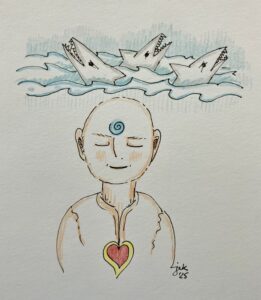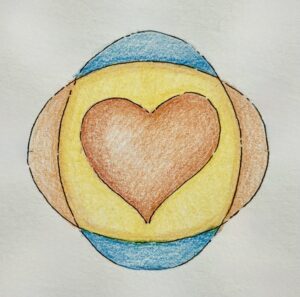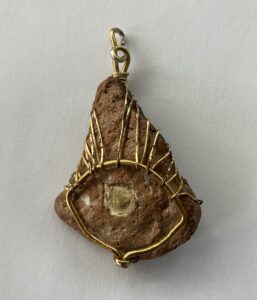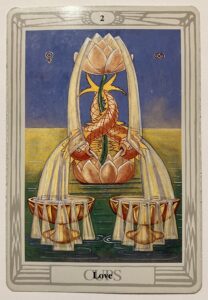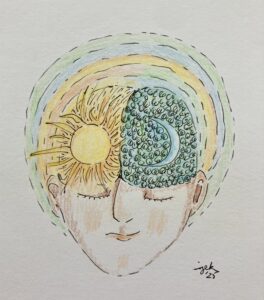
-Artwork © 2025 Jan Ketchel
The mind, though dual in function, is but one, inseparable mind. Half of it, known as the conscious mind, exists in the light of consciousness. The other half, known as the subconscious mind, lives in the darkness of unconsciousness. And in that darkness it is connected to everything beyond our conscious awareness, including infinity itself.
These different locations of mind perform complementary, yet vastly different, mental functions. Understanding their differences, yet most vital and intimate relationship, is key to the realization of one’s full potential.
With the bright light of consciousness the conscious mind is afforded the awareness to observe, study, reason, judge, decide and take action in life. Such exercises of its will allows it to override both common sense or instinctual impulse as it charts its own course.
This freedom to exercise one’s intent is akin to divine prerogative and comes with enormous responsibility. Conscious decisions are causes which become the effects of manifest reality. Consciousness is free to act both in its own self interest alone, or for the greater good of all. It is the responsibility of consciousness to choose wisely.
This responsibility is extremely crucial because it is the subconscious mind that, without reflection, produces the outcomes to the suggestions it receives from the conscious mind. The divinity of the subconscious is its supernatural ability to indeed make manifest the many whims of its intimate partner, the conscious mind.
The subconscious mind has access to both the personal unconscious of individuals as well as the collective unconscious of humankind. It remembers everything beyond the scope of conscious memory. If we are trying to solve a problem, it reaches, via association, into the annals of human history and brings forth images and knowledge to memory, dream, or intuition, that often provide consciousness with the missing piece of the puzzle of its current struggle.
Notice, however, that this process has nothing to do with logical thinking. The subconscious mind associates; it doesn’t think. Thinking is purely the process of the conscious mind. Furthermore, the subconscious mind, once it is impressed by a suggestion, manifests that suggestion via a pathway of events that often completely defies logic. This is the reason for the caveat to all autosuggestion: don’t attach to the outcome.
I conjecture that the subconscious taps, via association, the pool of collective wisdom available to it that best fits the accomplishment of its mission to fulfill its working orders, the suggestion from the conscious mind. It charts, via feeling, its course.
This might involve many preparatory events that clear the way for the expected manifestation of its goal. It is often only in hindsight that we can appreciate the role of seemingly unrelated or counterintuitive events that actually provided the foundation for the desired result.
This ability to often miraculously create is applied to any suggestion the subconscious attaches to. It trusts implicitly the vetting process of the conscious mind to decide upon a suggestion. Its role is to create, not judge whether a suggestion it is given is good or evil. It will not argue with the morality of a suggestion; it spends all its energy on manifesting what it is told is needed.
If we don’t have leadership within the conscious personality that suggests to the subconscious outcomes for the greater good, we become burdened with bearing the outcome of poor decisions. This is the law of cause and effect, the karma of all thought and action. We certainly can see this mirrored in the outer world now, where the creative forces of manifestation are being directed by tenuous leadership, creating tremendous instability all throughout the globe.
The conscious and subconscious minds are indeed a royal couple who are responsible for the full course of our human life. The royalty of consciousness is its ability to direct. For maximum, sustainable success, this requires great humility and the ability to think for one’s self by suspending judgment and determining what is truly right for self and all.
The subconscious mind, our inner miracle maker, can do anything. This is its gift. When the conscious mind provides its intimate partner, the subconscious mind, with the gift of suggestions grounded in love and the greater good, we take best command of our dual mind for the betterment of all.
For the betterment of all,
Chuck

